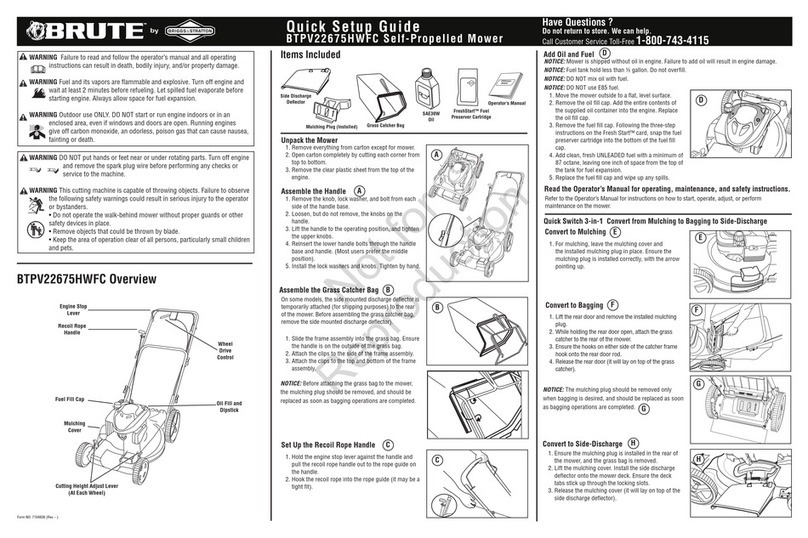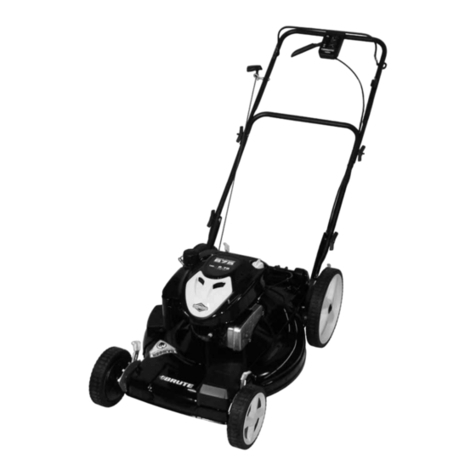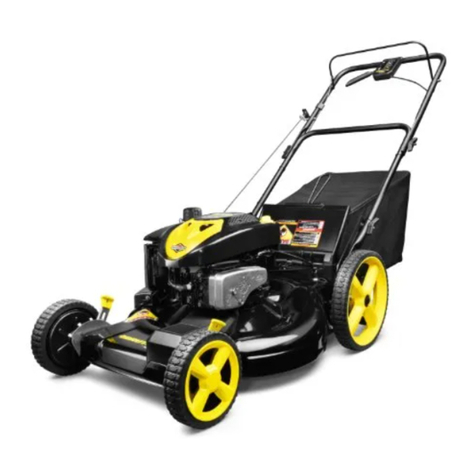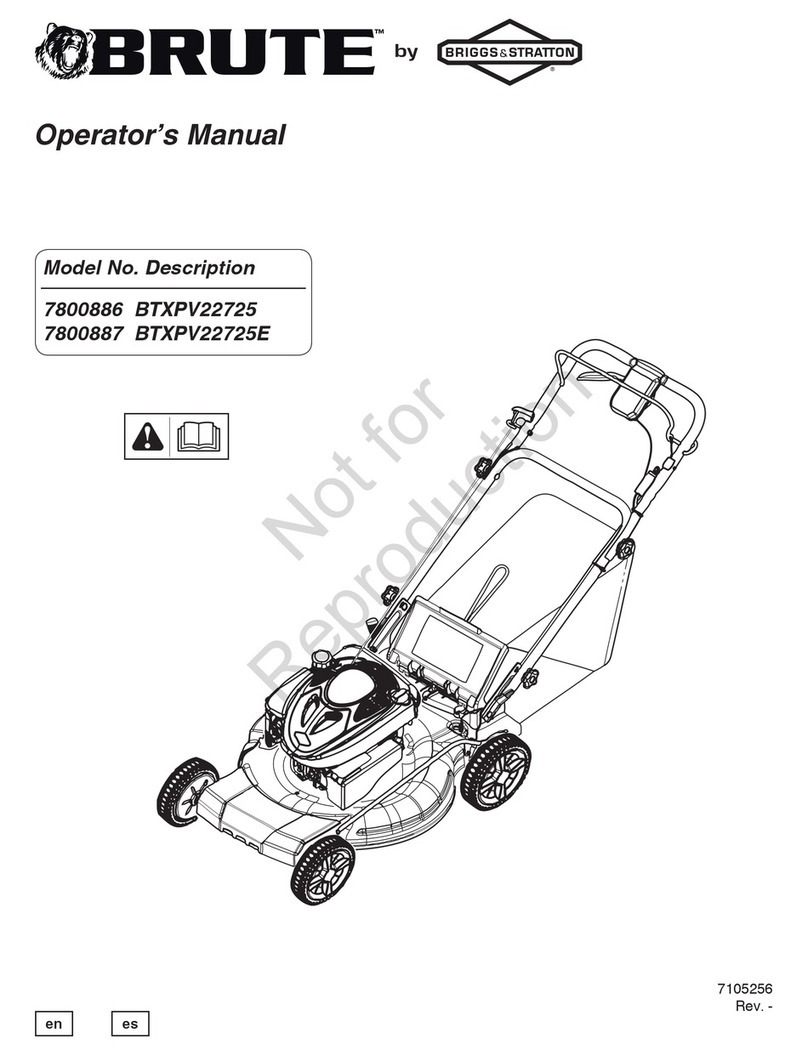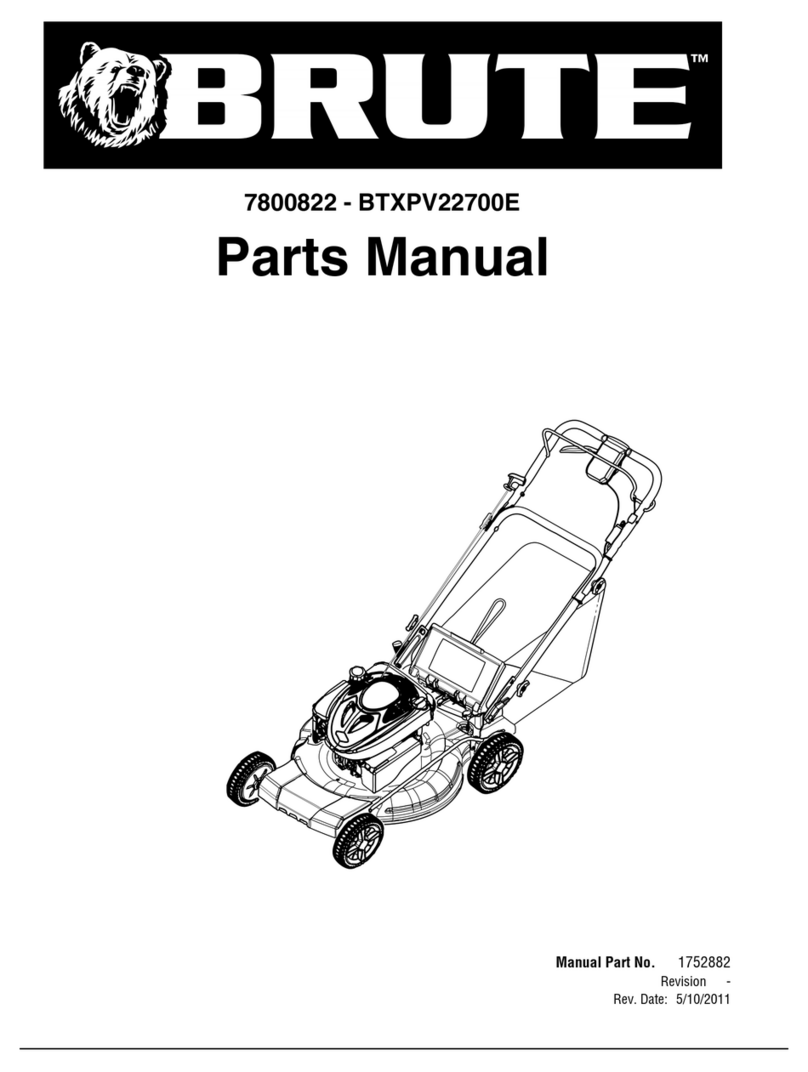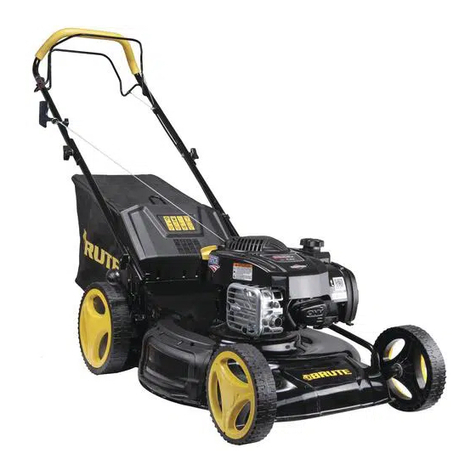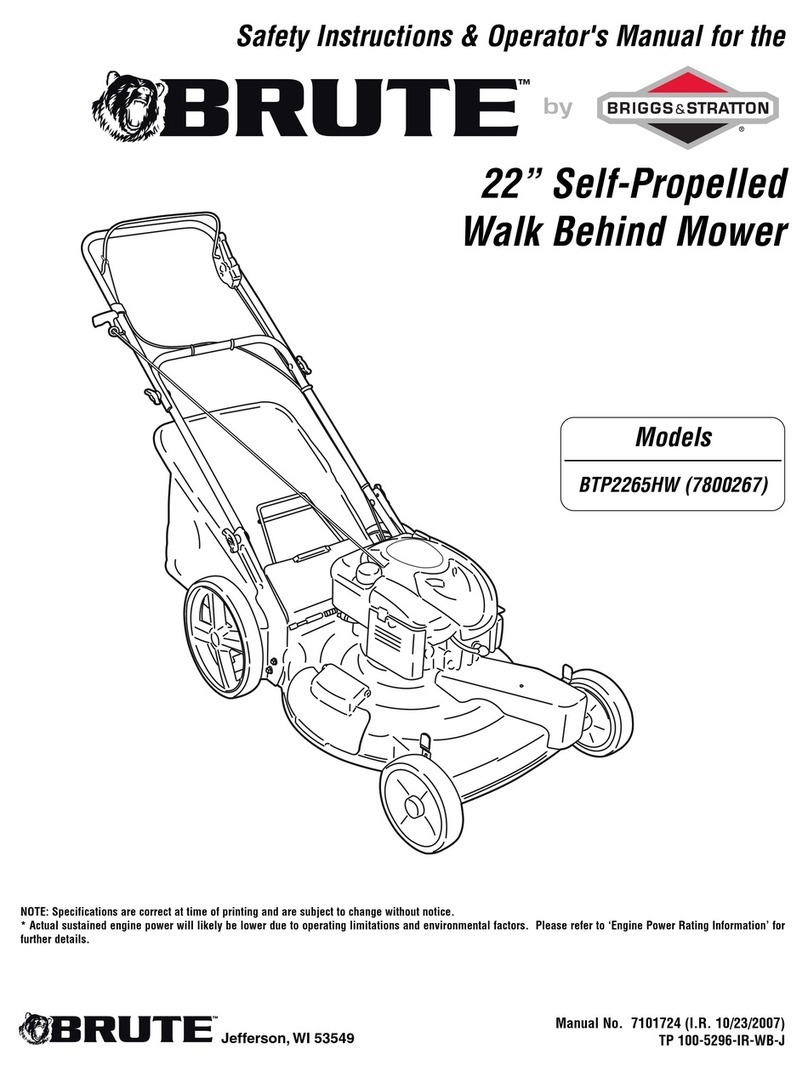
7
en
4. Handle fuel with extra care. Fuels are flammable and vapors
are explosive. Use only an approved fuel container. DO NOT
remove fuel cap or add fuel with engine running. Add fuel
outdoors only with engine stopped and cool. Clean spilled fuel
and oil from machine. DO NOT smoke.
5. Check the area to be mowed and remove all objects such as
toys, wire, rocks, limbs and other objects that could cause
injury if thrown by blade or interfere with mowing. Also note
the location of holes, stumps, and other possible hazards.
6. Keep people and pets out of the mowing area. Immediately,
STOP Blade, Stop engine and Stop mower if anyone enters the
area.
7. Check shields, deflectors, switches, blade controls and other
safety devices frequently for proper operation and location.
8. Make sure all safety decals are clearly legible. Replace if dam-
aged.
9. Protect yourself when mowing and wear safety glasses, a dust
mask, long pants, and substantial footwear. DO NOT mow
barefooted or with sandals.
10. Know how to STOP blade and engine quickly in preparation
for emergencies.
11. Use extra care when loading or unloading the machine into a
trailer or truck.
12. Check grass catcher components frequently for signs of wear
or deterioration and replace as needed to prevent injury from
thrown objects going through weak or torn spots.
Safe Handling of Gasoline
To avoid personal injury or property damage, use extreme care in
handling gasoline. Gasoline is extremely flammable and the vapors
are explosive.
1. Extinguish all cigarettes, cigars, pipes and other sources of
ignition.
2. Use only an approved fuel container.
3. DO NOT remove fuel cap or add fuel with the engine running.
Allow the engine to cool before refueling.
4. DO NOT refuel the machine indoors.
5. DO NOT store the machine or fuel container inside where
there is an open flame, spark or pilot light such as on a water
heater or other appliances.
6. DO NOT fill fuel containers inside a vehicle or on a truck or
trailer bed with a plastic liner. Always place the containers on
the ground away from the vehicle before filling.
7. Remove gas-powered equipment from the vehicle or trailer
and refuel it on the ground. If this is not possible, then refuel
equipment using a portable container, rather than a gasoline
dispenser nozzle.
8. DO NOT start gas powered equipment in enclosed vehicles or
trailers.
9. Keep the nozzle in contact with the rim of the fuel tank or
container opening at all times until fueling is complete. DO
NOT use a nozzle lock-open device
10. If fuel is spilled on clothing, change clothing immediately.
11. DO NOT overfill a fuel tank. Replace fuel cap and tighten
securely.
Responsibility Of The Owner
WARNING: This powerful cutting machine is capable of
amputating hands and feet and can throw objects that
can cause injury and damage! Failure to comply with the follow-
ing SAFETY instructions could result in serious injury or death
to the operator or other persons.
The owner of the machine must understand these instructions and
must allow only persons who understand these instructions to
operate machine. Each person operating the machine must be of
sound mind and body and must not be under the influence of any
substance, which might impair vision, dexterity or judgment. If you
have any questions pertaining to your machine which your dealer
cannot answer to your satisfaction, contact Customer Service.
Operator Safety Instructions
Protection for Children
Tragic accidents can occur if the operator is not alert to the pres-
ence of children. Children are often attracted to the machine and
the mowing activity. Never assume that children will remain where
you last saw them.
1. KEEP children out of the mowing area and under the watchful
care of a responsible adult other than the operator.
2. DO NOT allow children in yard when machine is operated and
turn machine OFF if anyone enters the area.
3. DO NOT allow pre-teenage children to operate machine.
4. ALLOW only responsible adults & teenagers with mature judg-
ment under close adult supervision to operate machine.
5. DO NOT pull mower backwards unless absolutely necessary.
LOOK and SEE behind and down for children, pets and haz-
ards before and while backing.
6. USE EXTRA CARE when approaching blind corners, shrubs,
trees, or other objects that may obscure vision.
Slope Operation
1. Slopes are a major factor related to slip and fall accidents,
which can result in severe injury. All slopes require extra cau-
tion. If you feel uneasy on a slope, DO NOT mow it.
2. Mow across slopes, never up-and-down. Exercise extreme
CAUTION when changing directions on slopes. DO NOT mow
steep slopes or other areas where stability or traction is in
doubt. Refer to the Slope Guide at the end of this manual.
3. Use extra care with grass catchers or other attachments; these
affect the handling and the stability of the machine.
Preparation
1. Read, understand, and follow instructions and warnings in
this manual and on the mower, engine and attachments. Know
the controls and the proper use of the mower before starting.
2. Only mature, responsible persons shall operate the machine
and only after proper instruction.
3. Data indicates that operators age 60 and above, are involved
in a large percentage of mower-related injuries. These opera-
tors should evaluate their ability to operate the mower safely
enough to protect themselves and others from serious injury.
